A team of astronomers has discovered one of the biggest black holes ever found, taking advantage of a phenomenon called gravitational lensing.
The team, led by Durham University, UK, used gravitational lensing—where a foreground galaxy bends the light from a more distant object and magnifies it—and supercomputer simulations on the DiRAC HPC facility, which enabled the team to closely examine how light is bent by a black hole inside a galaxy hundreds of millions of light years from Earth.
They found an ultramassive black hole, an object over 30 billion times the mass of our sun, in the foreground galaxy—a scale rarely seen by astronomers.
This is the first black hole found using the technique, whereby the team simulates light traveling through the universe hundreds of thousands of times. Each simulation includes a different mass black hole, changing light’s journey to Earth.
When the researchers included an ultramassive black hole in one of their simulations the path taken by the light from the faraway galaxy to reach Earth matched the path seen in real images captured by the Hubble Space Telescope.
The findings are published today in the journal Monthly Notices of the Royal Astronomical Society.
Lead author Dr. James Nightingale, Department of Physics, Durham University, said, “This particular black hole, which is roughly 30 billion times the mass of our sun, is one of the biggest ever detected and on the upper limit of how large we believe black holes can theoretically become, so it is an extremely exciting discovery.”
A gravitational lens occurs when the gravitational field of a foreground galaxy appears to bend the light of a background galaxy, meaning that we observe it more than once.
Like a real lens, this also magnifies the background galaxy, allowing scientists to study it in enhanced detail.
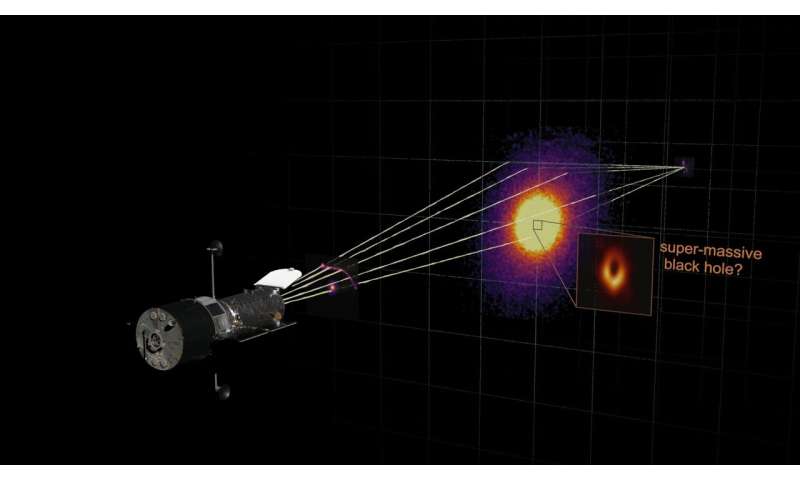
Video still—black hole—lensing geometry. © Durham University
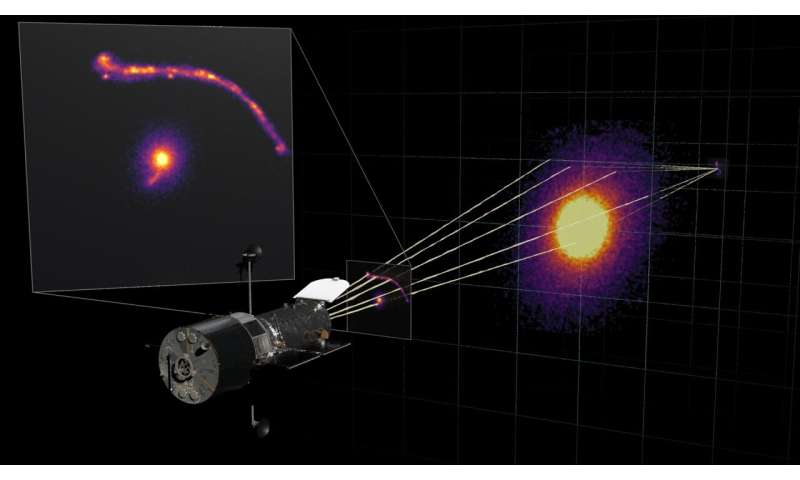
Video still—black hole—observed image. © Durham University
Dr. Nightingale said, “Most of the biggest black holes that we know about are in an active state, where matter pulled in close to the black hole heats up and releases energy in the form of light, X-rays, and other radiation.”
“However, gravitational lensing makes it possible to study inactive black holes, something not currently possible in distant galaxies. This approach could let us detect many more black holes beyond our local universe and reveal how these exotic objects evolved further back in cosmic time.”
The study, which also includes Germany’s Max Planck Institute, opens up the tantalizing possibility that astronomers can discover far more inactive and ultramassive black holes than previously thought, and investigate how they grew so large.
The story of this particular discovery started back in 2004 when fellow Durham University astronomer, Professor Alastair Edge, noticed a giant arc of a gravitational lens when reviewing images of a galaxy survey.
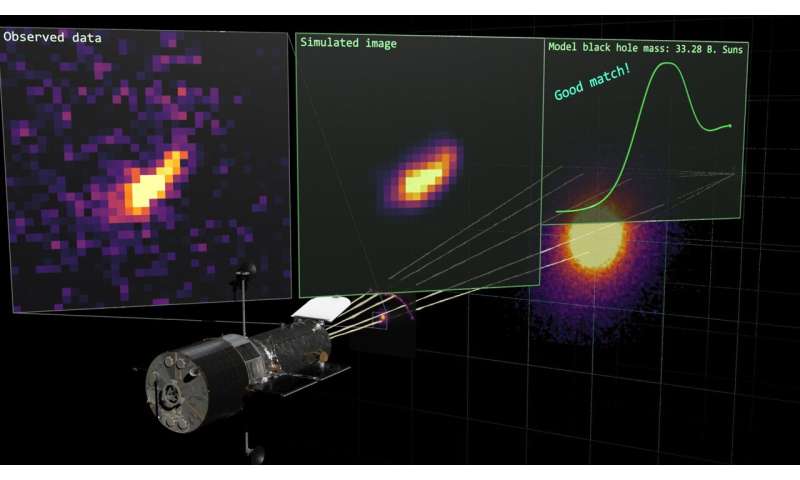
Video still—black hole—mass correct. © Durham University
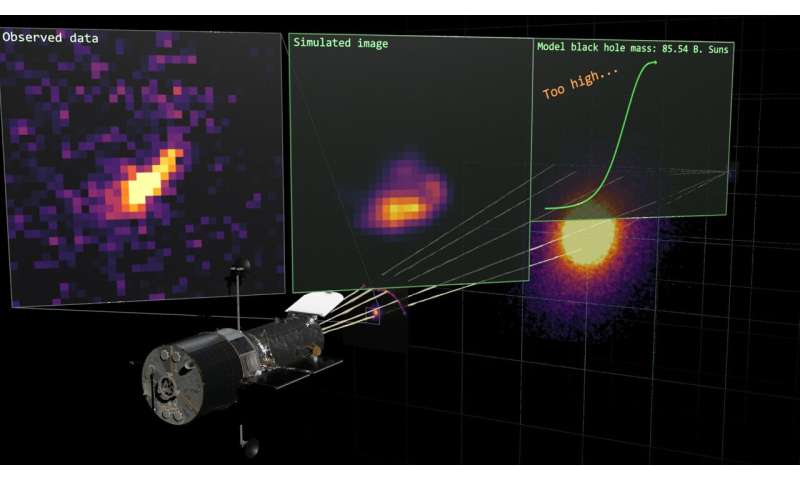
Video still—black hole—mass too high. © Durham University
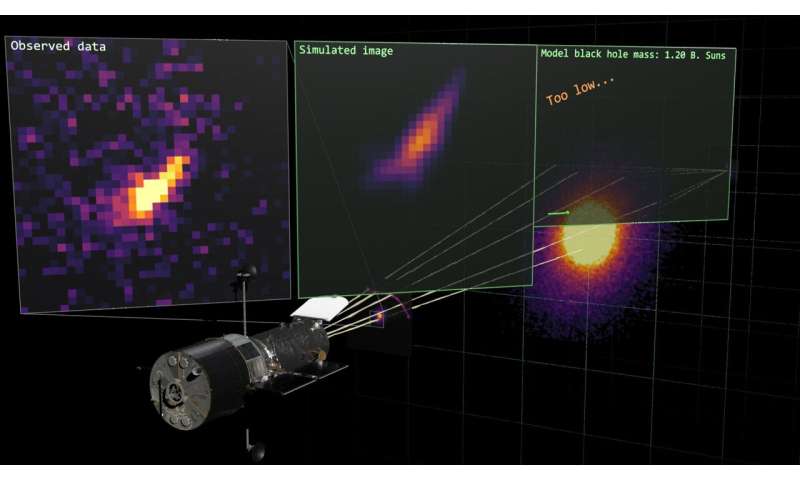
Video still—black hole—mass too low. © Durham University
Fast forward 19 years and with the help of some extremely high-resolution images from NASA’s Hubble telescope and the DiRAC COSMA8 supercomputer facilities at Durham University, Dr. Nightingale and his team were able to revisit this and explore it further.
The team hopes that this is the first step in enabling a deeper exploration of the mysteries of black holes, and that future large-scale telescopes will help astronomers study even more distant black holes to learn more about their size and scale.
More information:
James Nightingale et al, Abell 1201: Detection of an Ultramassive Black Hole in a Strong Gravitational Lens, Monthly Notices of the Royal Astronomical Society (2023). DOI: 10.1093/mnras/stad587
Citation:
Light-bending gravity reveals one of the biggest black holes ever found (2023, March 28)



